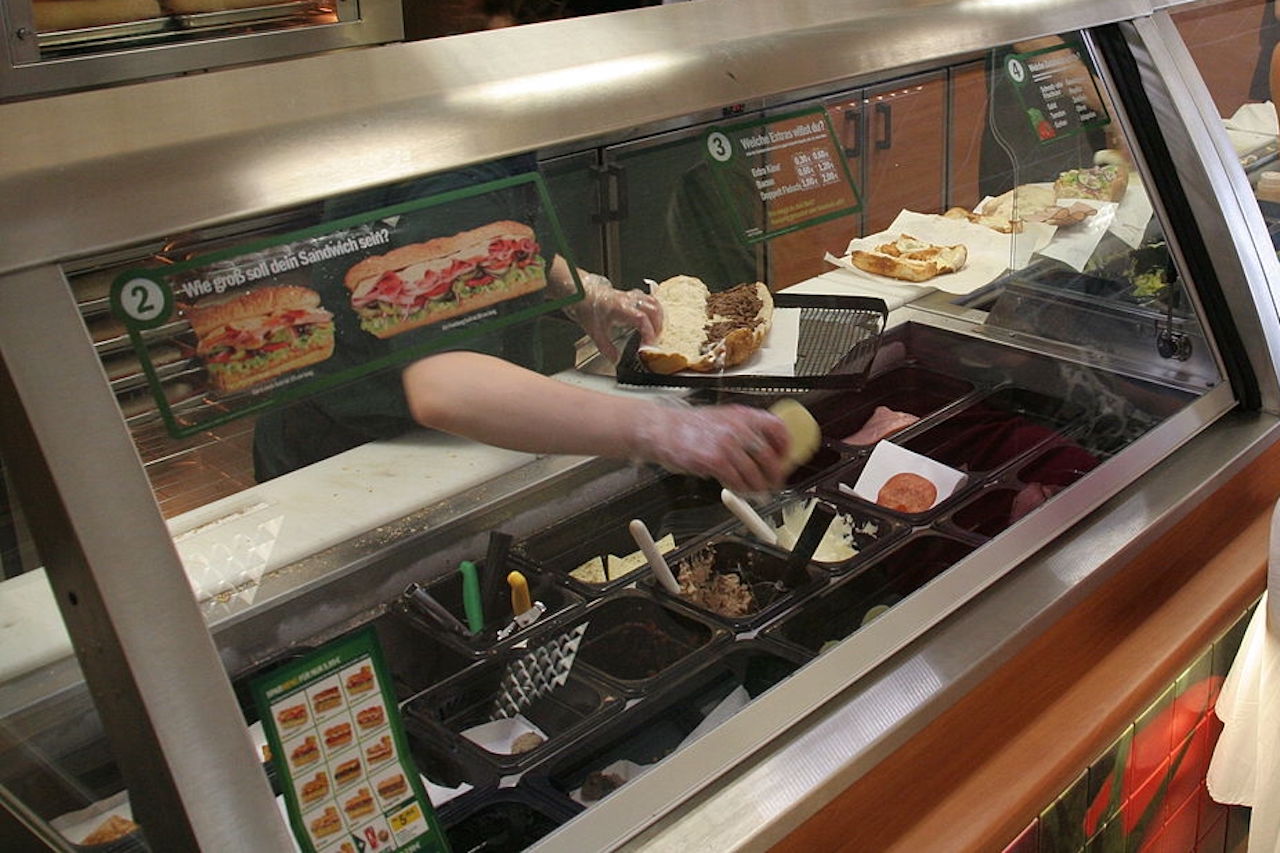
Subway’s competitive strategy and growth strategies direct business development toward industry leadership while maintaining the brand and what it stands for. This competitive strategy determines the competitive advantages and business competencies that are utilized to ensure profitability despite competition in the global fast-food market. The growth strategies guide Subway’s approaches and investments to grow its business and reach its goals. These strategies influence organizational development and reflect managerial decisions for addressing current foodservice market conditions and expectations. The PESTLE/PESTEL analysis of Subway provides details about these factors and trends that affect the foodservice industry and the implementation of the company’s intensive growth strategies and generic competitive strategy.
Subway’s growth strategies rely on a bigger market share, while the company’s competitive strategy depends on cost effective operations. The strategic goals and targets of Subway’s mission and vision are supported through growth and competitive advantages resulting from the company’s intensive growth strategies and generic competitive strategy.
Subway’s Competitive Strategy
Subway’s primary competitive strategy is cost leadership. According to Michael Porter’s model of generic strategies for competitive advantage, the objective of cost leadership is to minimize the costs of operating the quick-service restaurant (QSR) business. Through lower costs, this competitive strategy allows the company to improve its profit margins and to offer competitive prices for its various menu items. In this case, cost leadership is achieved through standardization and economies of scale, which are among the competitive advantages identified in the SWOT analysis of Subway. For example, standardized menu items and food preparation processes maximize efficiency and minimize waste, leading to reduced costs. Economies of scale enable cost-effective processes that support Subway’s competitive strategy of cost leadership.
Subway’s secondary competitive strategy is differentiation. Michael Porter’s model states that this generic strategy involves developing and using competitive advantages that differentiate the company, such as unique characteristics of food and beverage. Subway’s strategic objective for this competitive strategy is to ensure that its products and food service are unique enough to stand out from the competition. The Five Forces analysis of Subway shows aggressive rivalry involving major foodservice competitors, like McDonald’s, Burger King, and Wendy’s, as well as Starbucks. Subway’s competitive strategy of differentiation focuses on product characteristics, such as design, freshness, and quality, to attract consumers away from these competitors.
Subway’s Growth Strategies
Subway’s primary growth strategy is market penetration. Based on the Ansoff Matrix of intensive growth strategies, market penetration involves selling more of the same food and drinks in the company’s current markets. For example, with its competitive advantages, Subway aims to grow its business, revenues, and profits by selling more of its submarine sandwiches and drinks in the United States, Canada, and the European Union. The company implements this growth strategy through more aggressive franchising to establish more locations. In this regard, the generic competitive strategy of cost leadership enables competitive prices that attract consumers and support Subway’s growth strategy of market penetration. Similarly, the competitive strategy of differentiation leads to the uniqueness of submarine sandwich characteristics that attract more consumers, fueling the company’s growth.
Subway’s secondary growth strategy is product development. In the Ansoff Matrix, this intensive growth strategy involves offering new products to current markets and target customers. For example, Subway occasionally rolls out new menu items as part of this growth strategy. However, product development is only a secondary growth strategy because it involves considerable risks, such as the risk of producing food and beverage that do not generate satisfactory profits. Based on the competitive strategy of cost leadership, costs are minimized in implementing Subway’s growth strategy of product development. Also, the company’s competitive strategy of differentiation means that this growth strategy of product development focuses on new products that have unique attributes as competitive advantages.
Considerations in Implementing Subway’s Competitive Strategy & Growth Strategies
Subway’s operations management decisions determine the success of implementing the competitive strategy of cost leadership in the fast-food restaurant chain. For example, decisions on quality management, inventory management, and supply chain management influence the costs of operating the foodservice business and, thus, the cost-leadership status and competitive advantage of the organization. Also, the effectiveness of Subway’s marketing mix (4Ps) influences success in implementing the growth strategy of market penetration. Marketing strategies and tactics affect the company’s market share, as well as revenues and profits from offering new menu items to target consumers.
References
- About Subway.
- Mobarak, N. M., Nassar, M. A., & Omar Barakat, M. (2024). Cause-related marketing and its impact on brand image and loyalty: Evidence from international fast-food chains. Journal of Foodservice Business Research, 27(4), 383-408.
- Phuong, N. T. H. (2024). Business strategy concept: A systematical review. Journal of Knowledge Learning and Science Technology, 3(2), 128-142.
- Shafiee, M. M. (2024). Competitive strategy, organisational capabilities, industry structure and marketing performance. International Journal of Procurement Management, 19(1), 37-58.
- Subway Franchise Advantage.
- Subway Franchise Growth Opportunities.